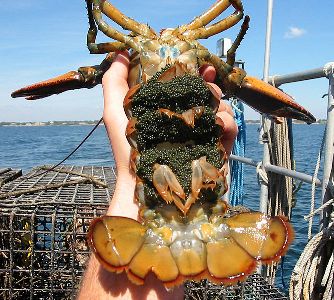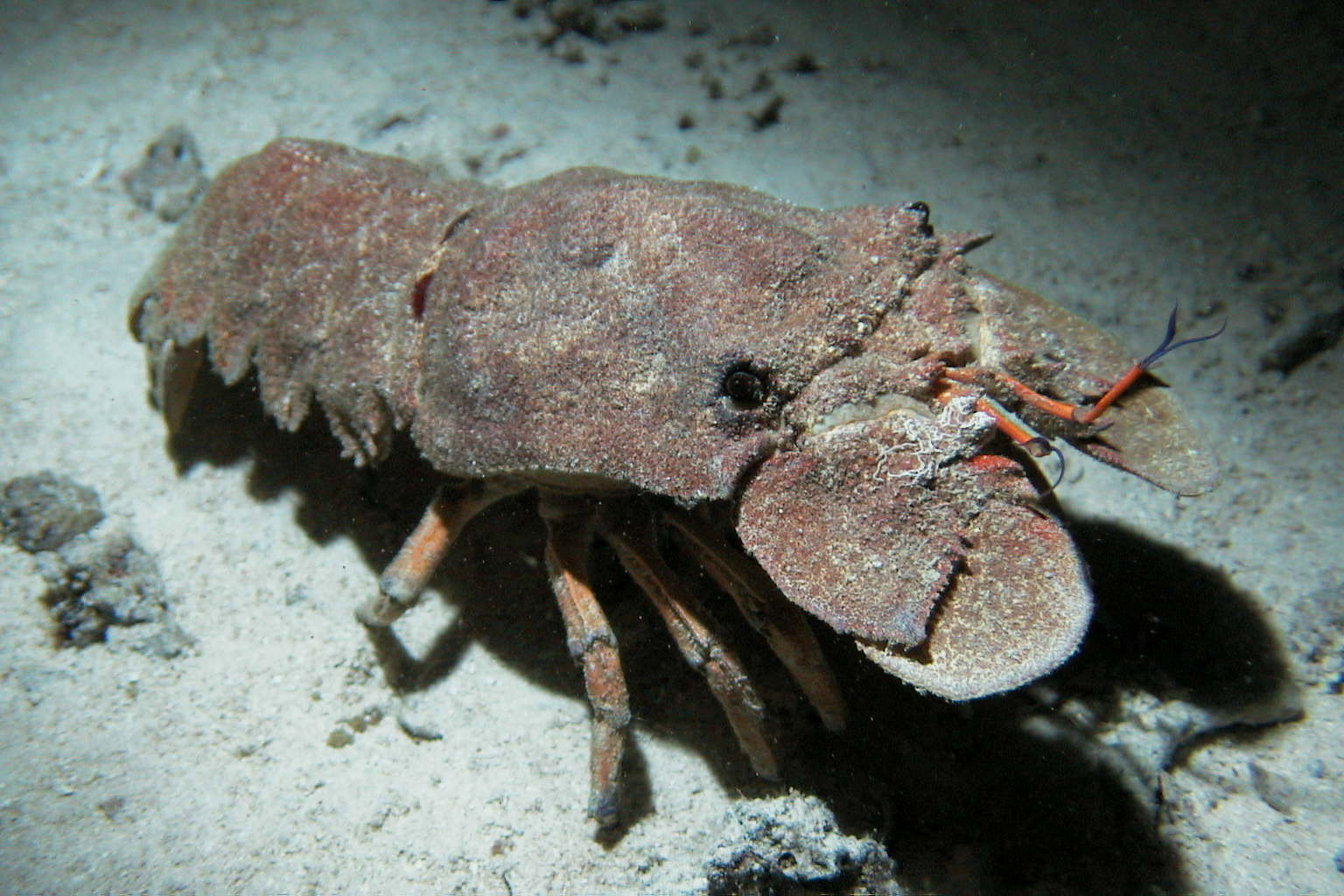Reproduction/Mating
Reproduction
Mating in Thenus orientalis occurs similar to
other animals. First, they must find a mate; males trying
to attract another female. Unlike other lobsters, the
process of trying to attract another mate, called copulation,
takes a little longer. this process can last up to five
minutes, which isn't long, but whereas others only take one
minute. When mating partners are found, they spend time
together before mating, which usually lasts a few days.
During this time, the males are more active and swims more
frequently and around the females. Mating only occurs at
late night hours and when it does, the male flips the female
over and crawls on top of the female. After fertilization,
the two lobsters swims away in opposite directions. This
sounds a little like an one night stand, don't you readers
agree? Egg laying happens two hours approximately, where
fertilized eggs are orange/yellow and non-fertilized eggs,
pinkish or creamish. Incubation ranges from 32-37 days and
hatching takes place during only early mornings which is
completed in 1-3 days. Water quality is a major influence
in hatching survivability though.

General conception of how the skyllaride family carry
eggs until hatching.
Differences in Sexes
Some differences in the two sexes of Thenus
orientalis are: Males are smaller in size, have a smaller
abdomen, has a different genital location (males near the fifth
walking leg, and females near the third), larger opening of
reproductive location, and smaller pleoplods (which are body
segments).
Maturation
Females and males mature kind of the same using
coloring in growth of their reproductive parts. In
females, signs of maturation is that the ovaries are dark orange
when fully matured. Before that, the ovaries are
translucent and turns to white to creamish to dark yellow before
reaching dark orange. In males, their testis become milky
white and the vas deferens (the tube that carries out sperm)
becomes very thick.
Fecundity
Fecundity is the rate at which an animal
reproduces. This is influenced mainly by external factors
as well as the size of the animal. Some external factors
that can change the fecundity rate in Thenus orientalis
are water temperature, the pH level, and their nutritional diet.
Next is Interactions.
To learn about more organisms, visit
Multiple Organisms.
Or feel free to also visit the UWL
Website.
